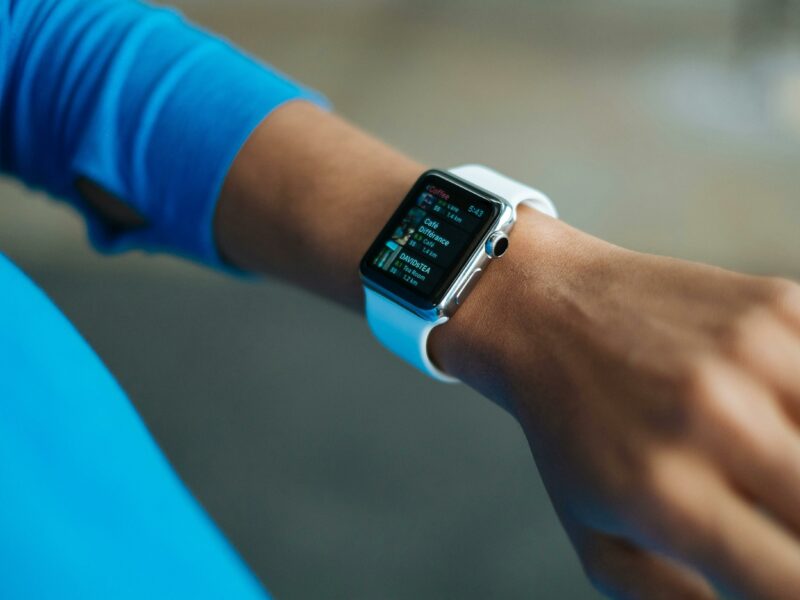
Mclub World – Smart wearables and personalized health are reshaping how we understand our bodies. These devices are no longer limited to step counts or basic sleep tracking. Now they offer deep insights into stress levels, heart variability, breathing patterns, and even emotional trends. With real-time data and AI-driven feedback, people can make informed choices about health—not just react to problems, but anticipate them.
“Read More: Top 10 Electric Powered Mountain Bikes in The World, Best E-bike 2025”
Modern smart wearables do more than record activity. They continuously monitor vital signs and analyze them instantly. Heart rate, oxygen saturation, and even ECG readings are available in seconds. Some devices now warn users of irregular rhythms before symptoms appear. This changes how we detect early health risks. Diagnostics move from clinics to the wrist, available 24/7, and personal.
Wearables can read stress before we feel it. By tracking heart rate variability and skin temperature, these devices know when your body is under pressure. Some send alerts to pause or breathe. Others suggest guided meditations in response. It’s mental health support on autopilot—small interventions that prevent bigger breakdowns. This kind of daily support was unthinkable just a few years ago.
“Read About: Smart Travel Gadgets That Are Changing the Way We Explore”
Early sleep trackers were often unreliable. But today’s wearables offer data rivaling sleep labs. They track REM cycles, disturbances, breathing irregularities, and even environmental factors like noise or light. You don’t just wake up to a sleep score—you see detailed breakdowns. This lets people adjust lifestyle, not just rely on caffeine. Sleep becomes a measurable, improvable part of health.
Numbers mean little without context. Smart wearables now translate health data into daily advice. They nudge users to walk more, hydrate, or adjust eating habits. Over time, patterns emerge. People learn how travel, diet, or stress affect their baseline health. This kind of feedback loop builds awareness. It turns passive wearers into active participants in their own care.
Non-invasive glucose monitoring is becoming real. Some experimental wearables use light-based sensors to estimate blood sugar without drawing blood. This could change life for diabetics. Instead of finger pricks, they’d have constant awareness of levels. Combined with AI, these devices could offer meal suggestions or insulin timing prompts. It’s still early, but the implications are massive.
Some wearables now focus on menstrual cycles, fertility, and hormonal changes. They detect temperature shifts and predict ovulation accurately. Others track PMS symptoms, helping users manage energy or mood. This personalization helps women plan better, from workouts to workdays. And it moves women’s health from general advice to specific, data-based care—finally catching up with real needs.
Performance wearables help serious athletes fine-tune every detail. From muscle oxygen levels to stride symmetry, these tools uncover small inefficiencies. Recovery is tracked as closely as training. Athletes know when to push or rest—avoiding injury. Even amateur users now get pro-level data. Sports science becomes personal, not just for elite teams or labs.
Some wearables can detect atrial fibrillation, heart murmurs, and even signs of stroke risk. Combined with machine learning, these tools compare user data to large databases. If something’s off, they alert the user—or even contact doctors. Early intervention means fewer ER visits. This tech saves lives quietly, sometimes without people even noticing how close they came to danger.
Wearables are connecting directly to electronic health records. Some hospitals accept data streams from users’ devices. Doctors review long-term trends—not just momentary symptoms. This enhances remote care, second opinions, and chronic condition tracking. It also empowers patients to take control. The doctor-patient relationship shifts from episodic to continuous.
With so much data being collected, questions of ownership and security are growing. Who controls this health info? Can insurers access it? Can users delete it? While smart wearables offer incredible health gains, they also require strong protection. Laws are catching up slowly. In the meantime, users must read policies carefully and choose trusted platforms.
This website uses cookies.